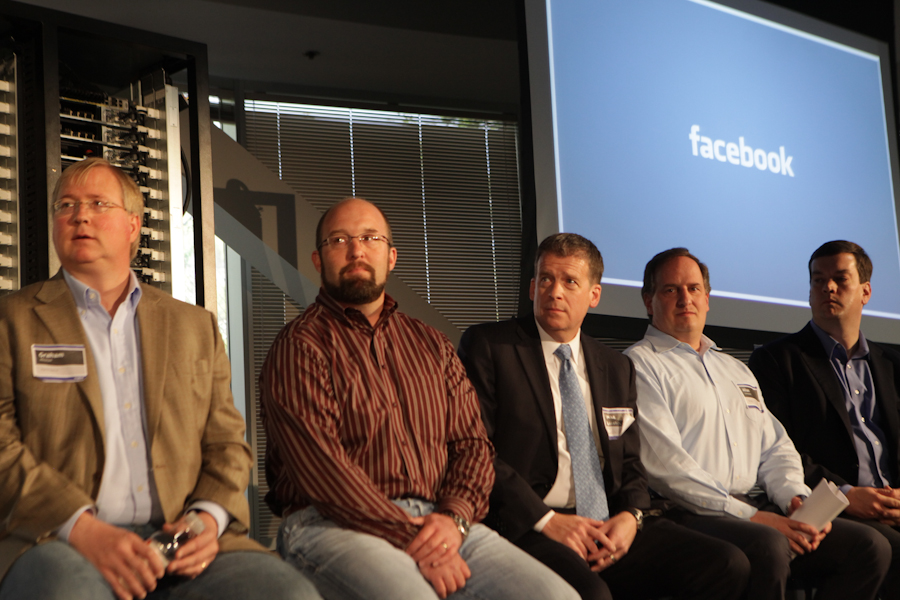Facebook: clean energy will help power datacenters


Running a service like Facebook requires considerable energy. Powering the Web server infrastructure -not the actual hardware itself - can the biggest roadblock to datacenter rollouts. Achieving greater energy efficiency and investments in renewable electricity are two ways that this cost driver is being addressed.
SmartPlanet e-mailed Frank Frankovsky, director of technical operations at Facebook, to learn how its tackling energy by changing how datacenters are designed. Frank is also one of the founding board members of the Open Compute Project Foundation, a group dedicated to building more efficient computing infrastructures.
The big takeaway: Facebook like cloud providers Amazon, Apple, and Microsoft is investing in clean energy to scale its operations into the future.
-David Worthington
SmartPlanet: What is the biggest cost center in datacenters these days? Given that every major software vendor is investing in massive datacenters, what are some of the more innovative things Facebook is doing to lower costs?
Frank Frankovsky: Servers and power are usually among the biggest expenses in any large web-scale facility. That's why, when we sat down to rethink our entire infrastructure, we started with designing our own servers and our own method for delivering power to them. The end result was a data center in Prineville that's 38 percent more energy efficient than our leased facilities, at a 24 percent lower cost. We're now in the process of implementing those innovations -- as well as other energy-saving designs, such as the use of outdoor-air cooling for the facility -- in our North Carolina and Sweden data centers. We've also shared these designs and our learnings from implementing them with the broader community, as part of the Open Compute Project.
SP: What are the primary options for cooling datacenters? What are the green/eco ramifications of each?
FF: The use of air conditioning to keep server rooms cool is one of the biggest wastes in the industry today; many companies expend a lot of energy to keep their servers colder than they need to. This is driven in part by industry standards for maximum operating temperature for servers that are far more conservative than they need to be. We use outdoor-air cooling in our new facilities, to avoid the energy expenditure associated with the use of air conditioning, and will soon share some of our learnings about how hot modern server technology can run.
SP: Let's pretend you're watching your grandchildren design datacenters for Facebook. 40 years from now, what are the technologies they're excited about being able to use and what are the big problems they wish had been solved by us in the early 21st century?
FF: There are a couple of areas where we can expect to see continued innovation in the coming years:
We believe that initiatives like the Open Compute Project, which are focused on the open sharing of information and collaboration, will help the industry move away from outdated assumptions (like the recommendations for server room temperature) and from gratuitous differentiation in hardware development. We also believe that greater openness will spur greater gains in energy efficiency across the entire industry.
We also believe that we'll see an increased focus on the use of sustainable materials in all areas of data center development. We worked hard to do so in the construction of our Prineville facility (see http://on.fb.me/sMuukU for details), but we think there's room for everyone in the industry to continue to improve.
SP: What are the biggest barriers to society being able to solve those problems?
FF: The traditionally closed nature of the hardware industry is one of the biggest barriers to continued innovation in data center design and operation. We believe that applying the principles of open source software to data center hardware and design will drive more innovation, greater accessibility to the best possible technology for us all, more efficiency in scale computing, and a reduced environmental impact through the sharing of best practices.
SP: Is renewable energy required to scale compute grid power?
FF: We think this is less about what's required for scale computing and more about encouraging everyone to be conscious of their technology's environmental impact and committed to minimizing that impact.
We're proud that our new data center in Sweden will be powered primarily by renewable energy sources, and we are committed to pursuing the highest possible efficiencies in our infrastructure. We are also committed to sharing our learnings on efficiency through the Open Compute Project. We believe that working together as an industry, we can achieve far greater gains than any one company working alone could.
SP: What has Facebook already accomplished towards producing its own renewable energy?
FF: "While energy efficiency is a critical component of our long-term sustainability effort, we also recognize that as our power needs grow, our energy sources will matter more and more. That's why every new datacenter we build over the course of the next 10 years will have a clean energy component. In some cases we may build our own installation, as with the small solar array at our Prineville, Oregon site. Sometimes we may be able to site a datacenter in an area with robust renewable energy availability, as is the case in Sweden. And in some cases we may invest in local renewable energy generation or a promising new technology. We believe this can help facilitate further innovation while also advancing our own understanding of what these kinds of investments mean for our business. Our long-term goal is to be able to have a significant portion of our datacenter energy needs met using clean energy sources."
Related on SmartPlanet:
- Cloud computing is making IT greener
- Just how green is cloud computing?
- Facebook plans subarctic datacenter
This post was originally published on Smartplanet.com